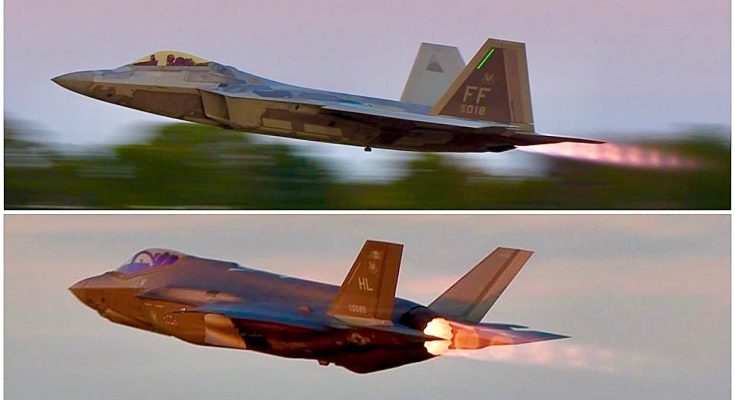F-35 and F-22 Are Just the Beginning: The Need for a 6th-Gen Fighter
The F-35 Lightning II and F-22 Raptor are two of the most advanced fighter jets in the world today. Both aircraft represent the pinnacle of fifth-generation fighter design, showcasing cutting-edge stealth, supercruise, and advanced avionics. However, as the pace of technological advancement accelerates, it’s becoming increasingly clear that these platforms are just the beginning. The need for a 6th-generation fighter is not just a possibility but a necessity to ensure air dominance in the decades to come.
The F-35 and F-22: Capable, But Limited
The F-22 Raptor, introduced in the early 2000s, was the first fifth-generation fighter to enter service with the U.S. Air Force. Known for its unparalleled stealth, extreme agility, and sensor fusion capabilities, the F-22 was designed with air superiority in mind. Its primary role is to establish and maintain control of the skies by neutralizing enemy fighters before they can pose a threat. However, its limited production and high operational costs have meant that only a relatively small number of these aircraft are available for service.
The F-35, a more recent addition, is designed as a multi-role stealth fighter capable of performing a range of missions, including air-to-ground, air-to-air, and electronic warfare. It has become the workhorse of modern air forces, offering advanced capabilities at a lower unit cost than the F-22. The F-35’s sensor suite, stealth design, and ability to integrate with allied forces have made it a game-changer in modern warfare. However, its design still has limitations, particularly when it comes to the need for long-range operations and a higher payload capacity.
Why We Need a 6th-Generation Fighter
While the F-22 and F-35 are formidable platforms, the rapidly evolving nature of air combat and technological advancements in adversary capabilities means that the U.S. and its allies must look ahead to the next generation of fighters. Here’s why a 6th-generation fighter is essential:
- Countering Emerging Threats: Adversaries like China and Russia are already developing next-gen aircraft with capabilities that could rival or surpass current fifth-generation fighters. The F-35 and F-22 were designed to address threats that were present a decade ago, but new stealth technologies, advanced radars, and AI-driven systems are emerging in other nations. A 6th-gen fighter will need to stay ahead of these advancements, offering superior stealth, sensors, and the ability to neutralize future threats.
- Unmanned Capabilities: The future of warfare is increasingly leaning toward automation, and a 6th-gen fighter will likely feature a hybrid of manned and unmanned capabilities. These new aircraft could be designed to operate both with a pilot and autonomously, allowing for greater flexibility in missions. A human pilot would still provide essential decision-making, but AI could assist in critical areas, making these aircraft far more responsive and adaptable.
- Advanced Sensor Fusion and Networking: A true 6th-generation fighter will rely on advanced sensor fusion and connectivity, allowing it to share data with other platforms, such as drones and ground units, in real-time. This networked warfare capability will be vital for operating in increasingly complex battle environments, where decision-making speed is key.
- Increased Survivability: Future threats will be armed with increasingly powerful anti-aircraft systems, meaning that stealth alone won’t be enough to ensure a fighter’s survival. A 6th-gen fighter will need to incorporate advanced electronic warfare capabilities, hyper-efficient propulsion systems, and even the potential for energy-based weapons that could disable enemy radars or intercept incoming missiles.
- Next-Level Performance: While fifth-generation fighters offer impressive agility and speed, the demands of future combat will require even more extreme performance. This includes longer-range supercruise, better maneuverability in contested environments, and the ability to conduct operations in space and beyond, as multi-domain warfare becomes a reality.
Conclusion: The Future of Air Dominance
The F-35 and F-22 are powerful tools for today’s warfare, but to maintain air superiority in the next 30 to 50 years, a new generation of fighters is crucial. The 6th-generation fighter will combine advanced AI, unmanned capabilities, enhanced survivability, and next-gen performance to counter the evolving threat landscape. It is no longer just about superior aircraft but about ensuring that air forces remain at the cutting edge of technological innovation, securing dominance in all domains of modern warfare. The race to develop the next great fighter aircraft has already begun, and the stakes have never been higher.



